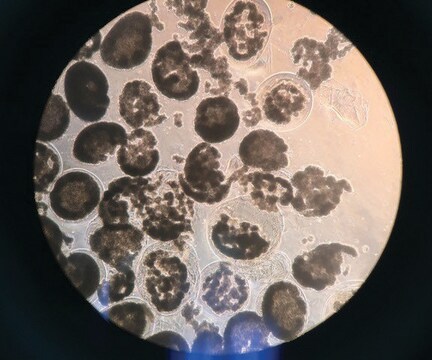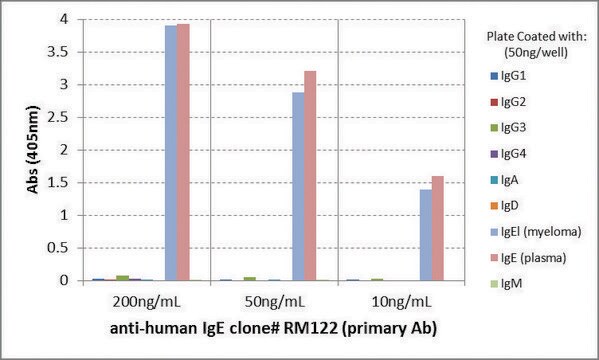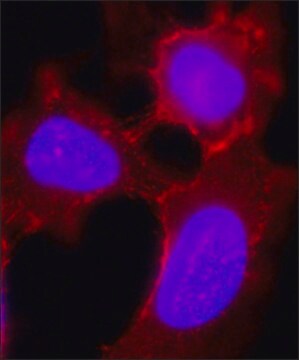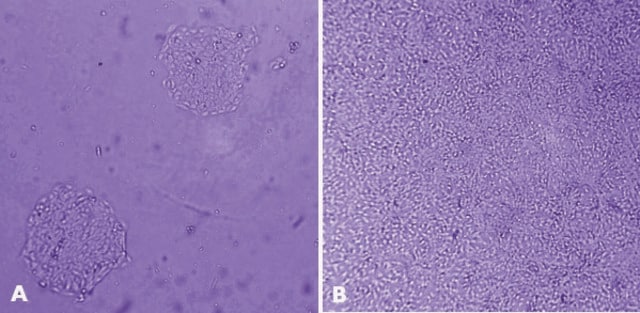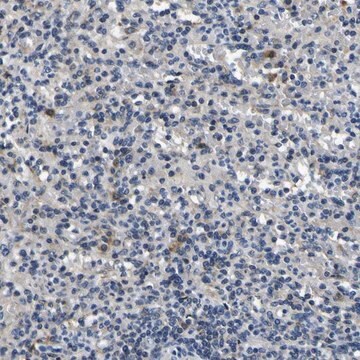추천 제품
사용
(up to 5 experiments, each creating ~120 capsules, each containing between 4,000 and 40,000 cells.)
저장 조건
room temperature
일반 설명
The Cell-in-a-Box technology is a means to protect, isolate, store and transport living cells. This novel, manual encapsulation kit is a modified version of Cell-in-a-Box which acts as an introduction to this novel and previously unavailable proprietary technology. This kit allows one to encapsulate cells using proprietary materials and methods that can be performed manually by any end user using a simple disposable system. The kit allows researchers to quickly and easily encapsulate their own cells for further laboratory studies such as testing for cell survival, viability, growth, and release of biomolecules.
The Cell-in-a-Box kit aims to replace the current methods of cell encapsulation which involve the use of large, expensive, and technologically challenging machinery. Often this is very rarely available to the average scientist in a research setting and far too expensive to purchase for initial experimentation. The unique encapsulation material also replaces commonly available encapsulation materials which have technological drawbacks. This kit version of Cell-in-a-Box represents a major leap forward in the cell encapsulation field that has remained largely stagnant for the past 30 years.
The components of The Cell-in-a-Box kit are non-toxic and biocompatible. The porous beads are approximately 2 mm in diameter and have a pore size which allows nutrients to enter and waste products and biomolecules as large as antibodies to leave the capsule unhindered yet cells are unable to pass in or out. The capsules entrap the cells securely within their polymer membranes, yet allow the cells to continue growing within the confined boundaries. Nutrients and secreted factors are able to diffuse and exchange through the membrane pores, which can be selectively tuned.
The durable encapsulation material is made of biocompatible cellulose-based material and can last for years in vitro and in vivo (although kit-made capsules are not designed for in vivo use) as well as contribute to longer cell survival periods. This kit can be tested with any kind of living cells. Encapsulated cells can be frozen, stored, and transported.
Since the proprietary cell packaging material used for the Cell-in-a-Box technology is derived from a naturally occurring material, it is thus harmless to the environment, biologically inert, and has been shown to be safe in humans.
The Cell-in-a-Box kit aims to replace the current methods of cell encapsulation which involve the use of large, expensive, and technologically challenging machinery. Often this is very rarely available to the average scientist in a research setting and far too expensive to purchase for initial experimentation. The unique encapsulation material also replaces commonly available encapsulation materials which have technological drawbacks. This kit version of Cell-in-a-Box represents a major leap forward in the cell encapsulation field that has remained largely stagnant for the past 30 years.
The components of The Cell-in-a-Box kit are non-toxic and biocompatible. The porous beads are approximately 2 mm in diameter and have a pore size which allows nutrients to enter and waste products and biomolecules as large as antibodies to leave the capsule unhindered yet cells are unable to pass in or out. The capsules entrap the cells securely within their polymer membranes, yet allow the cells to continue growing within the confined boundaries. Nutrients and secreted factors are able to diffuse and exchange through the membrane pores, which can be selectively tuned.
The durable encapsulation material is made of biocompatible cellulose-based material and can last for years in vitro and in vivo (although kit-made capsules are not designed for in vivo use) as well as contribute to longer cell survival periods. This kit can be tested with any kind of living cells. Encapsulated cells can be frozen, stored, and transported.
Since the proprietary cell packaging material used for the Cell-in-a-Box technology is derived from a naturally occurring material, it is thus harmless to the environment, biologically inert, and has been shown to be safe in humans.
애플리케이션
The proprietary technology may be used for a variety of applications including:
The possibilities are only limited by your imagination.
- In healthcare, it facilitates the safe implantation of cells, holding them isolated from the immune system and allowing long term production of therapeutic molecules in patients.
- In biotechnology, the Cell-in-a-Box technology protects cells in bioreactors and fermenters, while at the same time simplifying purification of bioproducts produced from the cells and reducing production costs.
- In agriculture, the Cell-in-a Box technology could help improve the survival and growth of crops, as well as to increase crop yield and to prevent spoilage.
- Enhancement of protein expression systems.
- Implantation of hybridomas in mice.
- And many more.....
The possibilities are only limited by your imagination.
특징 및 장점
- Encapsulate any type of living cell.
- Can protect, isolate, store, and transport living cells.
- Semi-permeable and semi-transparent membrane.
- Biocompatible and non-toxic.
- Cells continue to grow inside ~2 mm bead in a 3-D environment.
- Straighforward procedure takes approximately 30 minutes.
- Cells can live inside capsules for extended periods.
- Capsules protect cells from graph vs host.
포장
Each kit includes 5 luer-lock syringes, 5 sterile blunt-end G34 droplet needles, 5 sterile sharp-end G18.5 filling needles, 5 mL of Solution 1, and 50 mL of Solution 2. Volumes of the solutions have been optimized for the cell encapsulation protocol and are not available for sale separately.
법적 정보
(a)This product shall only be used for research purposes. Purchaser shall not use the product to manufacture commercial products and/or to sell services relating to or using the product.
(b) Sigma Aldrich does not grant to purchaser any license, express or implied, in violation of or infringing upon any third party rights. Purchaser is responsible for determining the existence of any such third party rights and to acquire any such rights, should they exist, before using the product.
(c) Purchaser acknowledges and agrees that the product is not intended for use in humans, and agrees not to conduct research with it in humans.
(b) Sigma Aldrich does not grant to purchaser any license, express or implied, in violation of or infringing upon any third party rights. Purchaser is responsible for determining the existence of any such third party rights and to acquire any such rights, should they exist, before using the product.
(c) Purchaser acknowledges and agrees that the product is not intended for use in humans, and agrees not to conduct research with it in humans.
Cell-in-a-Box is a registered trademark of Austrianova
Storage Class Code
10 - Combustible liquids
가장 최신 버전 중 하나를 선택하세요:
Brian Salmons et al.
Advances in experimental medicine and biology, 670, 92-103 (2010-04-14)
Although cell encapsulation technologies were originally developed for the treatment of acquired and genetic diseases such as diabetes, they can also be applied to the treatment of a variety of solid tumours. There are a number of strategies aimed at
M Löhr et al.
Lancet (London, England), 357(9268), 1591-1592 (2001-05-30)
Pancreatic cancer can seldom be resected, and chemotherapy has only a limited effect on survival or tumour load. We did a phase I/II trial in 14 patients with pancreatic cancer to assess the safety of local activation of low-dose ifosfamide.
Brian Salmons et al.
Current opinion in molecular therapeutics, 12(4), 450-460 (2010-08-03)
One of the first strategies for cancer gene therapy was the use of suicide gene/prodrug combinations, originally delivered to tumor cells using viral vectors. A major limitation of this approach was the inefficiency of suicide gene delivery. An alternative strategy
V Stadlbauer et al.
Xenotransplantation, 13(4), 337-344 (2006-06-14)
Late diabetic complications cannot be prevented totally by current antidiabetic strategies. Therefore, new therapeutic concepts of insulin replacement such as pancreas transplantation are evolving. Due to the shortage of human donor organs, transplantation of microencapsulated xenogeneic pancreatic islet cells has
문서
Cell-in-a-Box® technology allows cell encapsulation using biocompatible semipermeable cellulose nanoparticles for cellular therapy and 3D cell culture applications.
자사의 과학자팀은 생명 과학, 재료 과학, 화학 합성, 크로마토그래피, 분석 및 기타 많은 영역을 포함한 모든 과학 분야에 경험이 있습니다..
고객지원팀으로 연락바랍니다.

